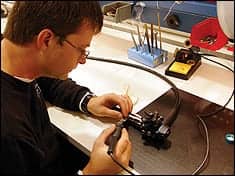There’s no one way to contain healthcare costs, although one option is to manage technology more effectively, both in its acquisition and in its support. But that often means getting in on the ground floor, before purchases are made. Are biomeds in a position to help? Sure they are. And are their recommendations making an impact? They sure are! As one expert puts it: “If the biomed does his job, he saves the hospital money.”

“Unlike industry, where you can market your products to a larger audience, most healthcare providers are locked in by the number of beds in the hospital,” says Ira Tackel, director of Biomedical Instrumentation at Thomas Jefferson University Hospital in Philadelphia. “Revenue sources are limited. So where do you contain costs?
According to Tackel, one very real option is to manage technology more effectively, both in its acquisition and in its support.
Dave Harrington, director of Special Projects, Technology in Medicine, Holliston, Mass., agrees.
“Biomeds are the first line of defense in controlling the cost of technology,” he says. “If the biomed does his job, he saves the hospital money.”
Harrington knows firsthand that the biomedical engineering department can have a huge impact on costs simply by becoming involved in the purchasing of new equipment.
“Often, the biomeds are never asked,” he says. “They must be proactive and work with the purchasing department. Otherwise, decisions are sometimes made by people who don’t understand.”
To purchase the full text of this article, click here…



